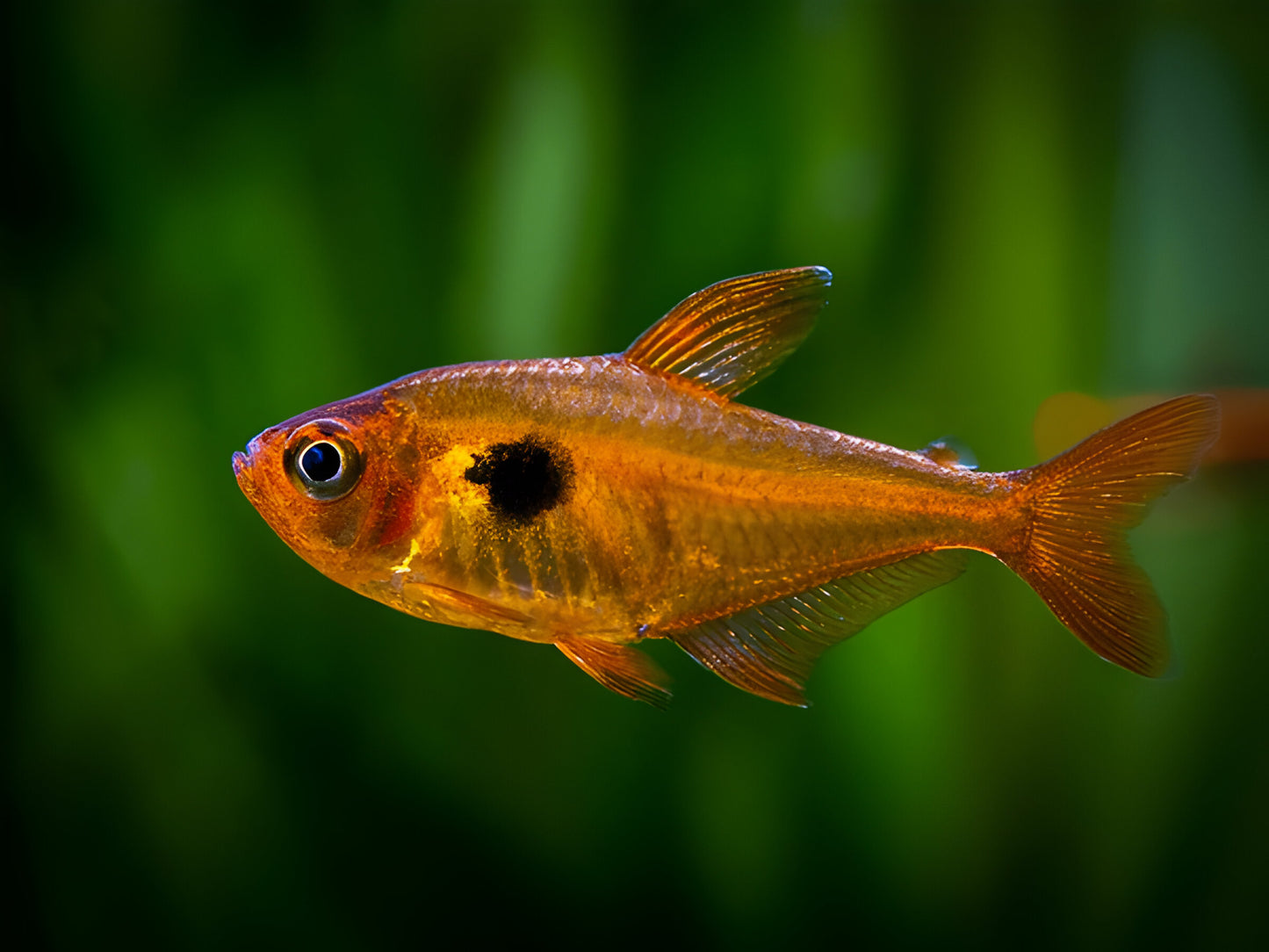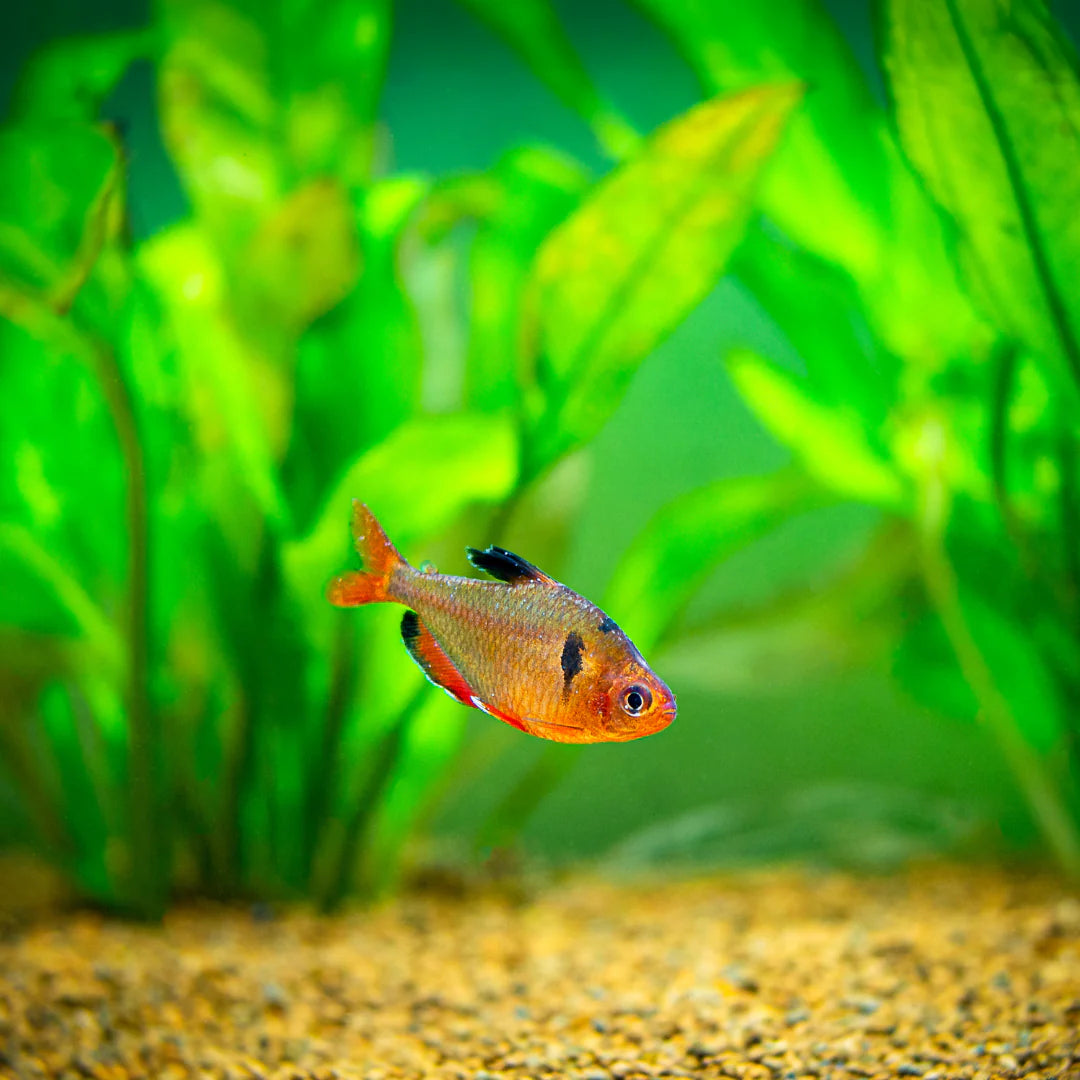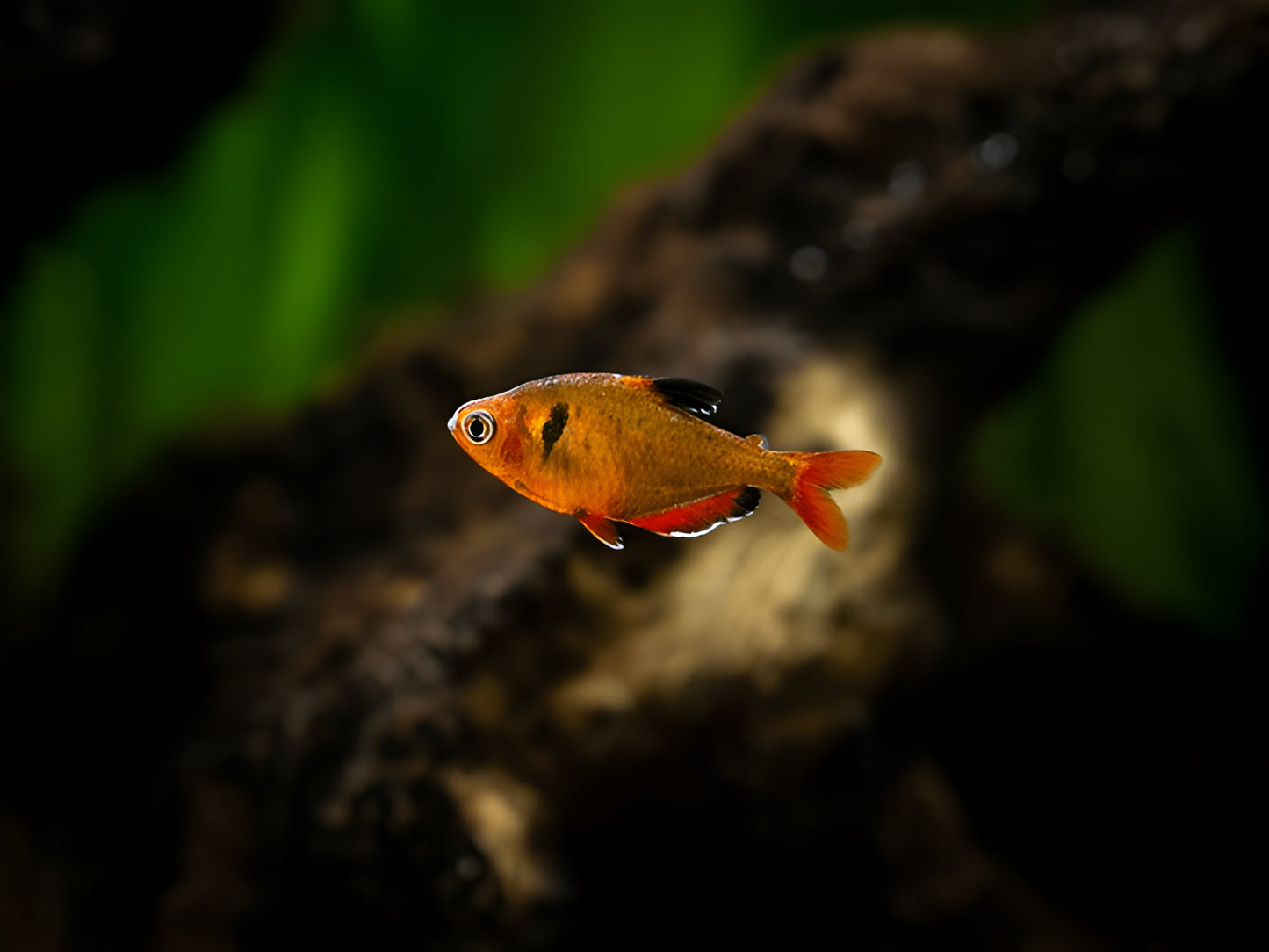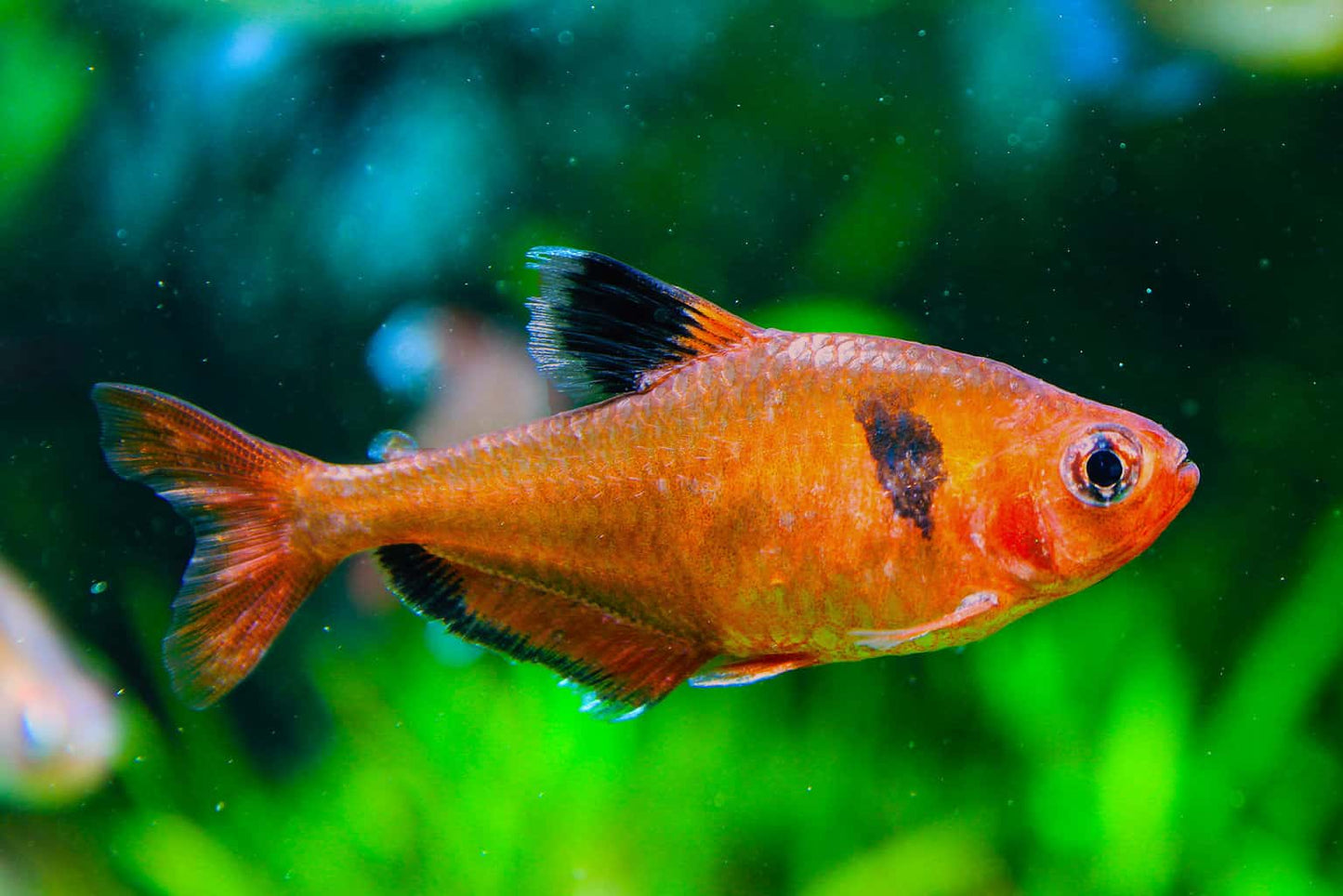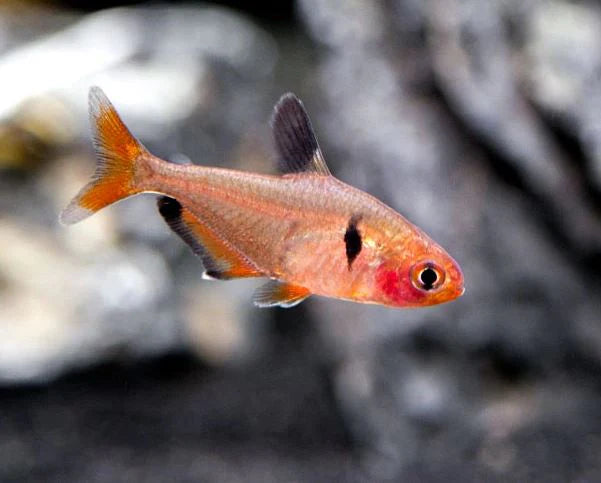Veda Aquarium
Sarpae tetra |1-2cms | Single
Sarpae tetra |1-2cms | Single
Couldn't load pickup availability
The Serpae Tetra (Hyphessobrycon eques), also known as the Red Minor Tetra, is a strikingly colorful freshwater fish known for its deep red body and contrasting black spot behind the gills. These active and lively fish are native to the slow-moving rivers and streams of South America. While relatively hardy and beginner-friendly, they are best suited for community tanks with compatible tankmates due to their semi-aggressive behavior.
Key Characteristics of Serpae Tetra:
- Size: 1.5–2 inches (4–5 cm).
- Color: Vibrant red body with a black spot near the gills and slightly translucent fins, often tipped with white.
- Lifespan: 5–7 years with proper care.
- Behavior: Active and semi-aggressive; known to nip fins, especially in smaller groups.
- Activity Level: Energetic swimmers that occupy the middle levels of the tank.
Water Parameters for Serpae Tetra:
- Temperature: 22–27°C (72–80°F).
- pH: 5.0–7.5, with slightly acidic water being ideal.
- Hardness: 5–15 dGH.
- Tank Size: Minimum 20 gallons for a small school of 6–8, with larger tanks recommended for more fish or community setups.
Tank Setup:
- Substrate: Dark substrates enhance their vibrant red coloration.
- Plants: Include dense live plants such as Java fern, Amazon swords, and Anubias to provide hiding spots and break up sightlines.
- Lighting: Moderate lighting; subdued light helps replicate their natural habitat.
- Water Flow: Gentle to moderate water movement; they prefer calm waters but adapt to moderate flow.
- Decor: Incorporate driftwood, rocks, and caves for shelter and territory establishment.
Diet:
Serpae Tetras are omnivorous and thrive on a varied diet:
- Staple Foods: High-quality flakes or micro-pellets.
- Protein Sources: Live or frozen foods like brine shrimp, daphnia, and bloodworms.
- Vegetable Matter: Spirulina-based flakes or finely chopped blanched spinach.
- Feeding Tip: Feed small amounts twice daily and remove uneaten food promptly to maintain water quality.
Behavior and Tankmates:
- Behavior: Serpae Tetras are active, shoaling fish that display their best behavior and coloration in groups of 6 or more. In smaller groups, they may become aggressive or nippy toward tankmates.
-
Tankmates:
- Compatible Species: Other fast-moving fish such as zebra danios, larger tetras (e.g., black skirts, diamond tetras), and bottom-dwellers like Corydoras or loaches.
- Avoid: Slow-moving or long-finned fish like angelfish, bettas, or guppies, which may become targets for fin-nipping.
Breeding Serpae Tetra:
Breeding Serpae Tetras in captivity is possible with the right conditions:
- Breeding Tank: Set up a separate tank with soft, slightly acidic water (pH 5.5–6.5) and fine-leaved plants or a spawning mop.
- Conditioning: Feed the breeding pair live or frozen protein-rich foods to encourage spawning.
- Spawning Behavior: Males display vibrant colors and court females. Females scatter eggs among plants or substrate.
- Egg Care: Remove adults post-spawning to prevent them from eating the eggs. Eggs hatch in 24–36 hours.
- Fry Care: Feed fry infusoria or liquid fry food initially, transitioning to finely crushed flakes or micro-pellets as they grow.
Care Tips:
- Group Size: Always keep them in groups of 6 or more to reduce fin-nipping and promote natural shoaling behavior.
- Tankmates: Select tankmates carefully, avoiding slow or long-finned species that might provoke nipping.
- Water Quality: Regular water changes are essential to keep ammonia and nitrate levels low, as Serpae Tetras are sensitive to poor water conditions.
- Environmental Enrichment: Provide a well-decorated tank with plants and hiding spots to reduce stress and aggression.
Why Choose Serpae Tetras?
- Vibrant Coloration: Their striking red bodies and dynamic behavior add a lively touch to any aquarium.
- Hardy and Adaptable: Easy to care for and adaptable to a range of water conditions, they are suitable for beginners.
- Energetic Behavior: Their active swimming and shoaling patterns bring life to the mid-levels of a tank.
Conclusion:
Serpae Tetras are an excellent choice for aquarists seeking a colorful, active species for a semi-aggressive community tank. With proper care, tank setup, and careful selection of tankmates, they can thrive and add vibrancy to your aquarium. Their lively nature and bold appearance make them a favorite among hobbyists.
Share
